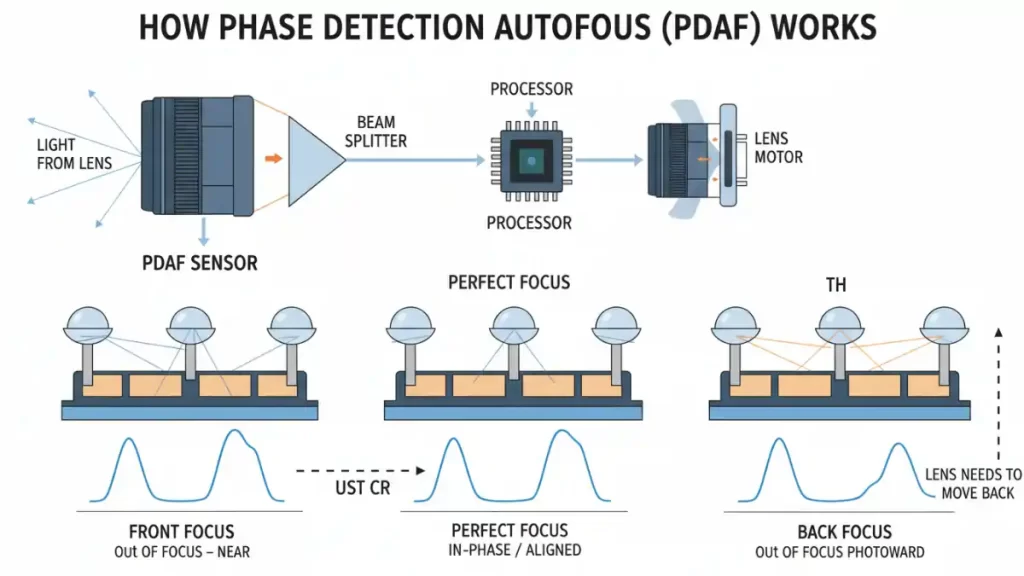
Definition: Autofocus that splits incoming light and compares phase differences to find focus quickly. It is faster than contrast AF and works well for tracking people or pets. Dual Pixel variants put detectors on most pixels for even quicker, smoother focus.
Phase Detection Autofocus (PDAF) is a sophisticated autofocus system commonly found in DSLR and mirrorless cameras. It works by analyzing the phase difference of light coming from different parts of the lens, allowing the camera to quickly and accurately determine the correct focus distance.
Here’s a breakdown of how it works:
- Splitting Light: Inside the camera, a small portion of the light coming through the lens is diverted to a dedicated PDAF sensor. This light is split into two separate images.
- Microlenses: The PDAF sensor has an array of microlenses, each paired with two photodiodes. Each microlens focuses light onto these two photodiodes.
- Phase Difference: When the image is out of focus, the light reaching the two photodiodes through the microlens will be “out of phase,” meaning their intensity patterns won’t align perfectly.
- Calculating Focus Adjustment: The camera’s processor analyzes this phase difference. Based on how much the patterns are shifted and in what direction, the camera can instantly calculate not just if the image is out of focus, but also by how much and in which direction the lens needs to move to achieve perfect focus.
- Lens Movement: The camera then sends precise instructions to the lens motors to adjust the focus elements to the calculated position.
- Confirmation: Because PDAF directly calculates the necessary lens movement, it’s very fast and efficient, often achieving focus in a single movement.
Example: Tapping a moving child in the viewfinder and the camera locks focus instantly.
Also called: Phase detection AF
Related: OIS, Optical zoom 3x
